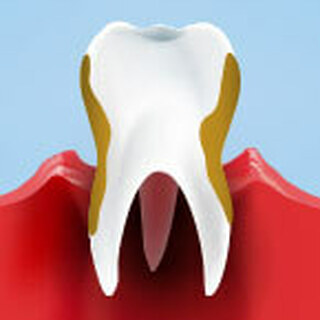RECEDING GUMS: SYMPTOMS, CAUSES AND TREATMENTS

- Receding Gums Symptoms
- Causes of Receding Gums
- Receding Gums Treatment
- How To Prevent Receding Gums?
- Questions About Receding Gums
Gum recession is when the margin of the gum tissue surrounding the teeth wears away, or pulls back, exposing more of the tooth, or the tooth's root. When gums recede, gaps can form between the gum and tooth, allowing disease-causing bacteria to build up. If left untreated, the surrounding tissue and bone structures of the teeth can be damaged, sometimes resulting in tooth loss. Receding gums is a widespread dental condition that progresses gradually.
Receding Gums Symptoms
As receding gums progress over time, you may notice the following symptoms:
Long Teeth
One symptom is the visible lengthening of the teeth. When gums recede because of gum disease, the teeth appear to be much longer than normal. As gums pull away from the teeth, they can appear longer while also forming pockets prone to infections.
Exposed Roots
Exposed roots are another symptom that can be extremely sensitive and uncomfortable since missing gum tissue causes tooth sensitivity. Exposed roots are often a sign of gum disease or overbrushing which is often attributed to wrong brushing technique, hard bristles or too much pressure being applied during brushing.
Loose teeth
When suffering from receding gums, you may notice loose teeth, attributed to gum disease caused by bacteria accumulation under the gums around the teeth. As receding gums worsen, the gum pockets deepen due to loss of tooth attachment structure.
Causes of Receding Gums
Numerous factors can cause gum recession, including:
Periodontal diseases
These are gum infections, caused by bacteria, that destroy gum tissue and the bone that holds your teeth in place. Any gum disease may result in gum recession. The early stage of gum disease is not often painful; therefore symptoms often go unnoticed. Left untreated though, early symptoms can develop into periodontitis – a serious infection of gum tissue. With proper oral hygiene, you can avoid further the damage to your gum line as well as tooth decay and tooth loss.
Early stages of gum disease can be seen with minor symptoms that include:
- Red, swollen, or purple gum
- Gums that feel tender to the touch
- Bleeding gums
- Chronic bad breath
Genetics
Some people are more susceptible to periodontal disease. Studies show that 30% of the population may be predisposed to gum disease, even if they take good care of their teeth.
Brushing too hard
If you brush your teeth too aggressively or incorrectly, it can cause your tooth’s enamel to wear away and eventually exposing the dentin and cementum resulting in gum recession. To brush with just the right amount of pressure, try brushing with an electric toothbrush like the Oral-B iO9. Its Smart Pressure Sensor technology alerts you when brushing too hard to help keep your gum line protected.
Poor dental care
Inadequate brushing, flossing, and rinsing with antibacterial mouthwash, can make it easy for plaque to turn into tartar, a hard substance that forms on and between your teeth. Tartar can only be removed by professional tooth cleaning. To prevent receding gums, consider using an electric toothbrush which removes 100% more plaque than a regular manual brush. Twice a year (or more if needed) visit your dental professional for scaling and root planning – a procedure in which tartar is removed from both above and below the gum line.
Hormone levels
Changes in estrogen levels over a woman's life, like puberty, pregnancy, and menopause, can make gums increasingly sensitive and vulnerable to gum recession. Hormones cause more blood flow to your gums, and because of that, the gums overreact to different factors. High levels of estrogen and progesterone make women more sensitive to the presence of plaque.
Tobacco products
Smokers, and other tobacco users, are more likely to develop sticky plaque which can result in gum disease. Smoking causes a lack of oxygen in the bloodstream and the infected gums do not heal well.
Grinding and clenching your teeth
Teeth grinding or clenching can exert too much force on the teeth, causing gum recession.
Crooked teeth or a misaligned bite
When teeth don’t come together evenly, too much force can be exerted on the gums and surrounding bone, allowing damage to the gum tissue to occur.
Receding Gums Treatment
Mild gum recession can be treated by professional deep cleaning in the affected area. During the deep cleaning, known as scaling and root planning, plaque and tartar are removed, and the exposed root area is smoothed over, making it more difficult for bacteria to accumulate. To treat advanced receding gums associated with periodontitis, a dental professional may recommend treatment with antibiotics.
If deep cleaning is not sufficient to treat the condition, because of excess bone loss and deep pockets, receding gums surgery may be required. The surgery, known as a gum (or tissue) graft may sound intimidating, but you don’t need to panic. During the procedure, the root exposure is treated with graft tissue from your palate or your mouth. Gum surgery is not always necessary. Sometimes tissue-simulating proteins are sufficient to encourage your body to grow bone and tissue, and in this case, you do not need a gum graft.
How to Prevent Receding Gums?
To prevent receding gums, you should follow a good oral hygiene routine of brushing 2X/day and flossing 1X/day. Additional ways to stop receding gums include:
- Quitting the use of tobacco products
- Eating a healthy, well-balanced diet
- Monitoring possible changes to your mouth
- Visiting your dental professional at least 2X/year for professional cleanings and check ups
Questions About Receding Gums
Q: What causes your gums to recede?
A: There are several factors that can cause gum recession, including periodontal diseases. These are bacterial gum infections that destroy gum tissue and supporting bone that hold your teeth in place, which is the main cause of gum recession.
Q: How Can I Prevent Gum Recession?
A: Taking good care of your mouth is the best way to prevent gum recession. Brush and floss daily and see your dental professional at least twice a year. Your dental professional may want to see you more often if you have gum recession. Consider switching to an electric toothbrush like the Oral-B iO9 , Its micro-vibrating bristles remove more of the plaque that can lead to tartar and gum disease.
Q: How can I make my gums healthier?
- Use an electric toothbrush.
- Brush your teeth correctly, at least twice a day.
- Use a toothbrush with a tongue scraper.
- Floss daily.
- Massage your gums. The Oral-B iO electric toothbrush comes equipped with a gum care mode that gently stimulates your gum line as you brush.
- Use an antibacterial mouthwash and an antibacterial toothpaste, with fluoride.







